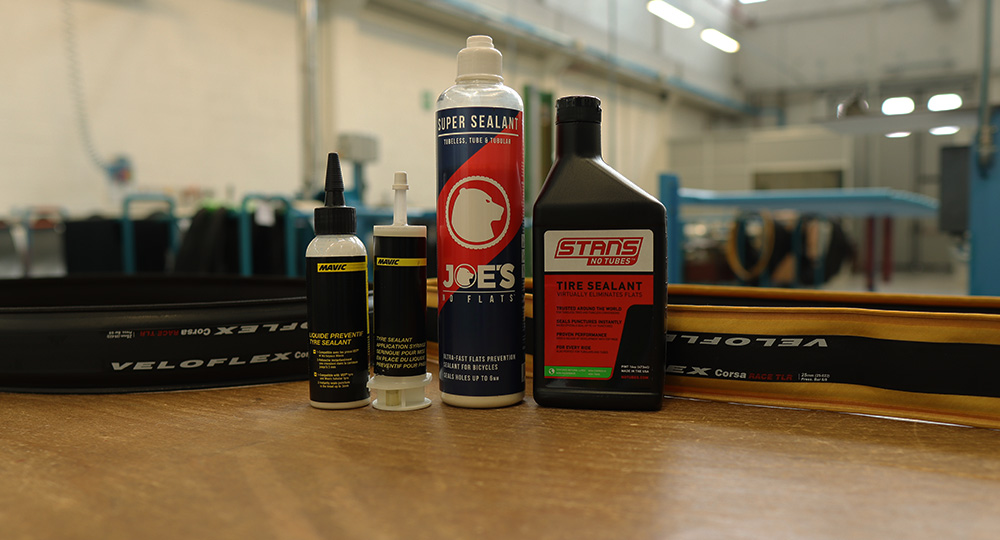The importance of the tubeless sealant

Choosing the right liquid sealant for your bicycle tires is one of the most important steps to use our TubeLess Ready (TLR) clincher tires.
The sealant is, above all, what makes the “magic” of using TubeLess Ready clinchers with no inner tube possible; indeed, as our clinchers are not TubeLess but TubeLess Ready, it’s necessary to choose a suitable product to seal all those micro leaks that would soon make the clincher deflate completely.
For proper sealing a suitable liquid sealant is key, as the tire can’t hold any air without it.
Which liquid selant is the best to choose
There are different sealants available on the market (natural latex, synthetic latex, latex free, foamy, with micro particles, with no particles, and so forth).
Also, rims may have tire bead areas of different shapes, so, unfortunately, sealing should not be given for granted; on the contrary, it is not granted because of the many different products that are available on the market and in case of impossibility to seal the tire correctly the inner tube would be the only viable solution to use the tires effectively.
As for the sealant, after carrying out a few tests to tackle this problem, we have found out that latex sealants perform the best to seal and repair our TubeLess Ready clinchers, because of the affinity with our latex-coated cotton casing.
Among the different sealants available on the market the following ones are those which perform best and we would like to recommend mounting on our TLR clinchers:
- Joe’s no flats – Super Sealant
- Mavic – Tire Sealant
- Stan’s no tubes – Tire Sealant
- Orange Seal - Regular Sealant (only for clinchers with black sidewalls).
We’ll keep testing the latest sealants available to check their performance on our clinchers and update the list of the sealants we recommend using to offer the most suitable solutions.
Which liquid sealants to avoid
All the sealants that are not mentioned in the list above are not suitable and can cause trouble or even damage the clincher as they are too strong.
Some sealants with too thin solid particles or foamy type are unsuitable to seal the micro leaks of our cotton casing, which, unlike industrial products (obtained from rubber-coated tissues), needs more care when it comes to choosing the right sealant.
Also, we do not recommend using coloured sealants on our gum-coloured casings, as the pigment may stain the sidewalls of the casing and alter its colour.
Tips for a correct use of the liquid sealant
Moreover, remember to shake the sealant bottle strongly for a few seconds before pouring the content, so as to mix the solid particles in the liquid sealant evenly and distribute it homogeneously onto the tire you will be mounting.
Unluckily, the solid component of the liquid tends to accumulate on the bottom of the bottle and if you do not shake it adequately to spread it evenly you would risk sealing the tires only with the liquid part of the mixture that may not be enough to seal them properly or guarantee protection from possible punctures.

Solid particles of sealant liquid tend to separate and stick on the bottom of the bottle.
After installing
After injecting the liquid and inflating the tire it’s important to roll the wheel by holding the hub, bending it onto the two sides to make the liquid spread evenly onto the inner surface and seal the micro fissures.
During the first 2 or 3 days since installing there could be small liquid and pressure leakages, we suggest you to inflate the tire and shake them with energy to better distribute the sealant inside the tire, this operation should be made until no leakage appears anymore.
Due to the fact that our cotton casing is covered with latex, similarly to latex inner tubes it’s normal to notice a pressure loss of approximately 0,5 bars daily, remember to inflate the tires at the right pressure prior every ride.
 English
English